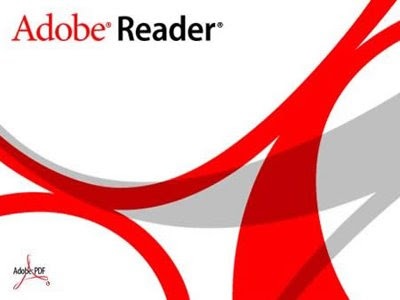So was Adobe sucking up to Apple when they decided to use the roman numeral for the version number?
Anyway, here’s another common package recipe that I see folks struggling with all the time.
<Annoyance>There is no such thing as Acrobat Reader. It has been called Adobe Reader for about 10 years now.</Annoyance>
Request Distribution Rights From Adobe
Yes, you must legally do this to distribute Adobe Reader in your enterprise/organization. It’s a simple formto fill out and you’ll get an e-mail back within a few minutes (in my experience at least) with further info: http://www.adobe.com/products/reader/rdr_distribution1.html.
Download the latest Adobe Reader
The best way to do this is to download this from Adobe’s FTP site: ftp://ftp.adobe.com/pub/adobe/reader/win/10.x/10.1.0/en_US/. That link is to the latest US English version. Do not use the MSI that is directly downloadable: this MSI is a wrapper MSI for the actual Reader installation MSI. Download the EXE.
Note that Adobe has a well-defined version numbering scheme beyond the scope of this post that may use some confusion as to when Adobe releases different types of installers and the installers relationship to other updates; this and a lot of other good info is on Adobe’s Enterprise administration | Acrobat family of products page.
Download and install the Adobe Customization Tool
This tool lets you generate a custom transform for reader (and other Adobe products): ftp://ftp.adobe.com/pub/adobe/acrobat/win/10.x/10.0.0/misc/. You can install this pretty much anywhere although installing it on your site server may be frowned upon.
Extract the Reader MSI
From a command-prompt, execute the following to extract the needed files:
AdbeRdr1010_en_US.exe -nos_ne -nos_o"<DestinationPath><DestinationFolder>"
Adobe uses an application delivery packager from Nosso:
-nos_ne tells the package not to run the setup command; i.e., “no execute”.
-nos_o tells the package where to output the temporary files. Note that there is no space after nos_o and the path specified. Also, DestinationPath must already exist but DestinationFolder must not. It’s best to just extract it to your final location for the package source files.
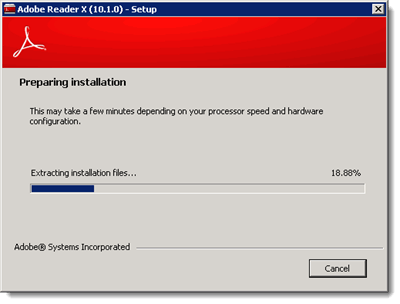
Create the Transform
Do you need to create a transform? No, but it does allow you to turn off things like the first run display of the EULA and remove the shortcut from the desktop (has anyone ever launched Reader from a shortcut?).
Simply launch the customization tool open the MSI you extracted above, walk through the sections in the wizard, and save an MST in the same directory by choosing Generate Transform… under the Transform menu. Note that it does allow you to just save your changes to the original MSI, but this is very bad practice as you should never modify the vendor’s MSI. When you close the wizard, do not save your changes, they are already contained in the MST you generated.
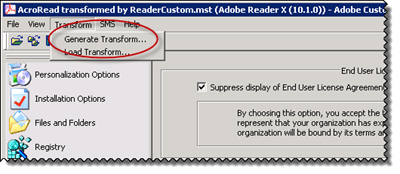
If you are familiar with InstallShield or AdminStudio, the customization wizard will look familiar to you because the wizard is really just the transform wizard from InstallShield licensed and customized by Adobe.
Import the Package into ConfigMgr
In the ConfigMgr console, under Software Distribution –> Packages right-click and choose New –> Package From Definition.
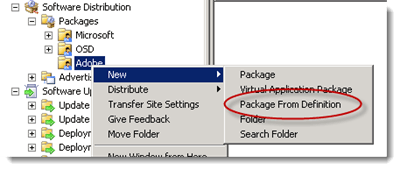
Follow the wizard to import the MSI and have ConfigMgr create the package and programs for you:
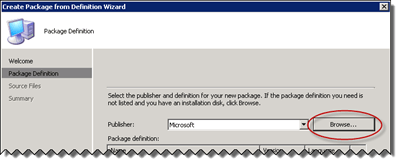

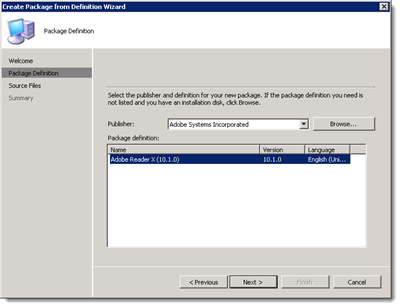
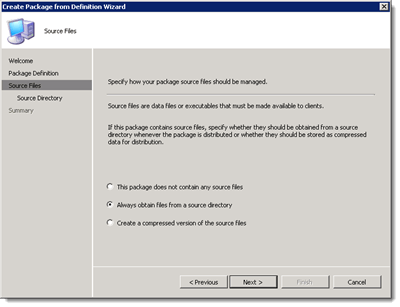

Edit the Auto-Generated Programs to include the Transform
Simply add the following to any program command-line to use the transform:
TRANSFORMS=<NameOfMST.mst>
This, of course, assumes that you put the MST in the same directory as the MSI and the files you extracted above. Note that relative paths are fine for MSTs and do not require full-paths. Thus, on my lab box, the full-command-line for the Per-system unattended program is
msiexec.exe /q ALLUSERS=2 /m MSINKHYV /i "AcroRead.msi" TRANSFORMS=ReaderCustom.mst
I also then use my MSICleanup script (documented in my ConfigMgr Program Scripts post) to clean up the auto-generated programs.
Distribute and Advertise
The final steps should be pretty well-known.

